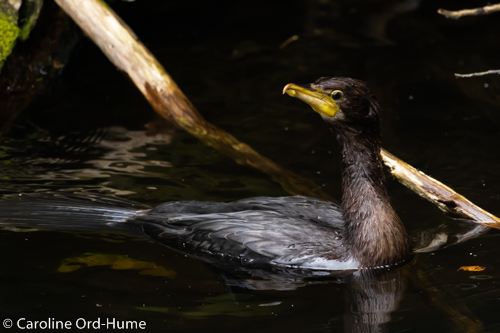Black Shag - Cormorant
Native New Zealand Black Shag birds, kawau Phalacrocorax carbo, are not common cormorants and are more wary of humans than some of the other shag species. These birds are large in comparison to some of the other New Zealand shag species.
Black Shag, Kawau (Phalacrocorax carbo), Cormorant, Zealandia Wildlife Sanctuary, Wellington
The Black Shag colouring is mainly black-dark brown and they can most often be seen feeding in estuaries and harbours, or roosting on headlands and in trees in groups.
Black Shag (Phalacrocorax carbo). Family: Phalacrocoracidae
Other names the Black Shag is known by include Kawau, Large Black Shag, Black Cormorant, and Great Cormorant.
New Zealand black shag geographical subspecies is novaehollandiae, one of six subspecies recognised.
Habitat and Distribution
New Zealand Black Shag can be found in various different habitats such as on the coast, in estuaries and harbours, rivers and streams, and sometimes in inland lakes.
Black shag birds are found across the world in countries such as North America, Greenland and Iceland, Eurasia, Africa, and Australasia.
In New Zealand the population of these black birds is sparse but widespread across the islands. The numbers of individuals or breeding pairs is currently unknown as there has been no official count.
Black Shag Description and Identification
The mature Black Shag is large, black / dark brown wing and tail feathers, black legs and feet, yellow skin around the green eyes, and a grey bill.
During the breeding cycle the skin near the eyes can change colour to an orange and a black crest appears on the upper neck.
Diet
The diet of Black Shags consists of small to medium size fish species such as trout, perch, smelt, mullet, carp, eels, red cod, spotties etc. Freshwater molluscs and crayfish, along with ducklings, can also be taken as part of their diet.
Conservation
Being a native but naturally uncommon bird, any conservation threat should be taken seriously. Historically it was believed that Black Shags consumed a lot of trout and therefore they were targeted by fishermen who used to shoot them in competition for fish.
This persecution does not happen as much now but the birds are still under threat from getting caught in set-nets and fishing lines, and/or becoming hooked on fishing hooks, all of which can lead to drowning or death by consuming fishing hooks.
As Black Shags nest in sites such as trees, rats, stoats, and possums do not appear to target the eggs and young chicks.
These birds do not like to be approached by humans or their nesting sites to be to near to humans. They are liable to leave the nests if people get too close. It is important to take a wide birth around the nesting sites of birds so they can hatch eggs and rear their young successfully.
New Zealand Shag Species
List of New Zealand shags / cormorants species.
Birds and wildlife in NZ...
List of native New Zealand bird species and a list of native animals in and around New Zealand
